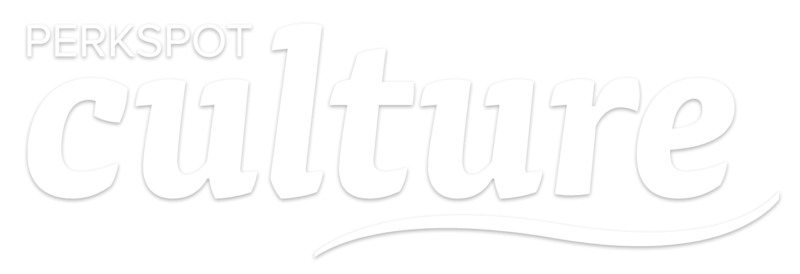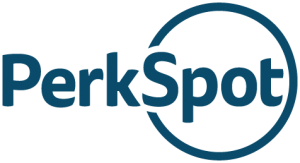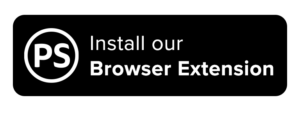Quick-Start Guide to Employee Travel Benefits: 2025

For millions of American workers, travel has taken on new meaning in 2025 — not just as a leisure activity, but as a vital component of personal fulfillment, workplace satisfaction, and overall well-being. As global tourism rebounds and younger generations drive a cultural shift in how and why we explore, employers have a unique opportunity to align with this momentum.
From employee engagement to retention, the benefits of supporting travel are clear — and increasingly, companies are finding creative, cost-effective ways to make it a reality for their teams. Employers are recognizing that enabling travel isn’t just a perk — it’s a strategic advantage. When organizations empower their people to disconnect, recharge, and explore, they’re investing in a more energized, loyal, and productive workforce.
But there is no one-size-fits-all approach when it comes to offering meaningful travel-related benefits. There are countless options, and understanding which ones are best for your organization can be tricky. With that in mind, we’ve created this guide to help you better understand the role travel plays for the U.S. workforce in 2025, what’s motivating them to hit the road in such numbers and how employers can help make this a reality for their people — and reap the rewards.
The Golden Age of Travel
Travel has come roaring back in the wake of the Covid-19 pandemic. After years of limited mobility, international tourism surpassed pre-pandemic levels in 2024, and momentum shows no signs of slowing. At the outset of the year, the U.S. Travel Association projected that U.S. travel spending will grow by 3.9% in 2025, reaching $1.35 trillion. Travel has become so pervasive, in fact, that dozens of countries and cities across the globe are finding ways to push back on what they consider to be overtourism, including increased visitor taxes, bans on short-term rentals (Airbnb, etc.), daily limits on the number of visitors to culturally significant areas and more, but this seems to be having little impact on America’s wanderlust.
Much of this renewed interest in travel is driven by Millennials and Gen Zers — generations that are poised to make up 80% of the workforce in advanced economies by 2034. For these groups, travel isn’t just a leisure activity; it’s a reflection of identity and a top financial priority. A Thrillist and Vox survey found that 72% of Millennials and Gen Zers consider travel core to their identity, and nearly 90% rank it as a financial priority above other expenses. These younger workers also prioritize personalized travel experiences over specific destinations, signaling a deeper emotional connection to exploration. Even globally, the trend holds: 71% of Gen Zers in Hong Kong, for example, say travel is their main motivation for working, outpacing traditional milestones like buying a home or starting a family.
Unsurprisingly, this passion is also spilling into their professional lives. According to new research from American Express, 90% of Gen Z workers say business travel improves their job satisfaction, and 60% plan to travel more for work in 2025. Nearly half extend these trips for personal enjoyment, blending business and leisure seamlessly.
While younger employees may travel more frequently, research from McKinsey confirms that the desire to travel spans all generations. According to their findings, Millennials averaged 5 trips over the past year, followed by GenZ at 4.4, Gen X at 3.9 and the Baby Boomers at 3.4.
Even in the face of ongoing economic uncertainty, Americans’ passion for travel remains remarkably resilient. According to the World Travel & Tourism Council’s 2025 Economic Impact Research report, the travel and tourism sector is expected to continue its upward trajectory this year, signaling strong consumer demand despite inflation and other financial pressures. This sustained interest highlights the value people place on travel experiences, even when budgets are tight.
Evolving Travel Trends
Americans are not only eager to explore — they’re doing so with greater intentionality and purpose. Today’s travelers are seeking more than just a change of scenery; they’re prioritizing meaningful experiences, personal well-being, and deeper connections, whether with loved ones, local cultures, or themselves. This year’s most popular travel trends reflect a growing desire to make each trip count — financially, emotionally, and socially.
- Family and Multigenerational Travel. Family vacations are leading the way, with 47% of travelers opting for multigenerational trips in 2025—a 17% increase from 2024. This trend reflects a growing desire to strengthen family bonds and create lasting memories across generations.
- Wellness and Restorative Escapes. There’s a significant rise in wellness tourism, with travelers seeking destinations that offer relaxation and rejuvenation. Activities such as yoga retreats, spa treatments, and digital detoxes are gaining popularity, catering to the need for physical and mental restoration.
- Experiential and Cultural Immersion. Travelers are increasingly seeking authentic experiences that allow them to engage deeply with local cultures. This includes participating in local traditions, cuisine, and storytelling, moving beyond typical tourist routes to gain a deeper understanding of the world.
- Bucket List Adventures. Despite rising travel costs, 40% of travelers are planning bucket list or big-ticket trips in 2025, indicating a sustained interest in fulfilling long-held travel dreams.
The ROI of Travel: Why Employers Should Care
Many Americans struggle to take full advantage of their PTO, and for years, it was assumed this benefited employers. However, research increasingly shows the opposite: well-rested (and well-traveled) employees are consistently among the most engaged, loyal, and productive members of the workforce by a wide margin.
Case in point: employees who take vacation time return to work more refreshed, focused, and energized. A study published in the Harvard Business Review found that people who took more vacation were not only more productive but also reported being more satisfied with their jobs and less likely to burn out. Another study by Project: Time Off found that employees who used all their vacation days had a 6.5% higher chance of receiving a promotion or raise than those who left time unused.
According to research from Gallup, “low engagement costs the global economy $8.8 trillion, or 9% of global GDP,” with burnout being a primary driver of disengagement. But time off, particularly for travel, improves overall job satisfaction and engagement. Employees who feel their well-being is valued are more likely to be loyal and committed to their employer. Gallup also found that engaged employees are 21% more productive and 59% less likely to look for another job. Encouraging employees to take regular time off — including travel — helps them return recharged and focused, with studies indicating PTO-related benefits can boost performance by up to 80%.
Even business travel delivers measurable benefits. A survey found that 82% of U.S. CEOs and 65% of European CEOs believe business travel helps with employee retention, and 75% of HR decision-makers said adding business travel opportunities in job descriptions made them more attractive to applicants. Additionally, among employees, 63% said traveling for work makes them more likely to stay with their current employer — a figure that jumps to 76% among Gen Z employees.
The report also indicated that companies that increased their travel budget in 2023 had an employee turnover rate of 8.6%, which is below the Gallup average of 10% and 3.5 points lower than companies that reduced their budgets. This suggests that companies investing in travel — whether for business or leisure — are likely to see better retention outcomes. Furthermore, a Booking.com for Business survey found that 82% of respondents believe work travel supports career growth, 75% say it aids personal development, and 52% report improved mental well-being.
Finally, employers that incorporate travel benefits also gain a competitive edge by appealing to the existing preferences of their workforce. According to the Incentive Research Foundation, employees perceive travel incentives as more valuable than cash rewards — 77% even say a travel experience is the most effective incentive, period. The study also found that higher earners show an even stronger preference for non-cash rewards like travel, making it a strategic tool for retaining top talent.
Adding Travel Benefits is Easier Said Than Done
Despite the clear benefits of supporting employee travel — ranging from improved retention to greater engagement — many employers struggle to incorporate travel benefits into their offerings. Budget limitations, regulatory considerations, and administrative hurdles can all pose significant barriers, particularly for small to mid-sized organizations. Offering travel benefits presents challenges for employers, including:
- Financial Constraints: Employer-provided travel benefits can be costly, requiring significant financial investment that may not align with every company’s budget. Smaller businesses and organizations with tighter margins may find it especially challenging to allocate funds for such programs while balancing other employee benefits and operational costs.
- Legal and Compliance Issues: Travel-related benefits must comply with complex federal and state regulations, including tax implications, wage and hour laws, and benefits eligibility rules. Employers must also consider how these perks interact with existing compensation structures and ensure proper reporting to avoid potential compliance risks.
- Administrative Complexity: Managing a travel benefit program requires well-defined policies, streamlined administrative processes, and user-friendly systems to ensure consistency, compliance, and accessibility for employees. Employers must balance these factors while making the program attractive and easy to navigate, ensuring it delivers real value to their workforce.
Getting Creative with Travel Benefits
While adding formal travel benefits may not be feasible for every employer, there are still meaningful and creative ways to support employees’ desire to travel. With a little flexibility and strategic thinking, companies can offer low-cost or scalable travel incentives that still feel rewarding and personal. Here are a few innovative ways employers can incorporate travel-friendly perks into their benefits package without overextending their budget.
- Work-from-Anywhere Weeks. Allow employees to work remotely from any location for a set period each year. This flexibility lets them extend personal trips or experience living in a new city without using vacation days. Some companies even sponsor co-working spaces in popular destinations.
- Travel Rewards for Performance. Instead of cash bonuses, consider offering all-expenses-paid trips as incentives for top-performing employees. Whether it’s a luxury resort stay, a cruise, or a guided adventure tour, these rewards feel exclusive and build excitement.
- “Bucket List” Bonus. Give employees the chance to check something off their travel bucket list by offering a one-time travel grant (e.g., $2,000 after three years of employment) that employees can use for a dream destination or experience.
- Volunteer Travel Grants. Support employees in giving back by funding volunteer trips abroad or domestic service projects. This encourages meaningful travel experiences and aligns with corporate social responsibility initiatives.
- Travel Stipends. Instead of just offering vacation time, employers can provide a stipend for travel expenses that employees can use for flights, hotels, or experiences. This could be an annual allowance, a one-time reward for tenure milestones, or a wellness incentive to encourage time off.
A Secret Weapon for Travel Benefits
Beyond these ideas, many companies already have access to a tool that can offer extensive savings that make leisure travel more attainable for employees across all income levels and job roles: an employee discount program. These programs help break down the financial barriers that often prevent employees from taking full advantage of their time off.
While travel may not be the first thing that comes to mind when mentioned, these days many employee discount programs offer a breadth and depth of travel-related savings that rival any dedicated travel benefit platform. These offerings align to the wants and needs of the U.S. workforce and provide a unique and compelling value — particularly for younger employees. Here are some ways an employee discount program can help:
- Airfare: Lower ticket prices, waived baggage fees, priority boarding, and access to corporate or negotiated rates for domestic and international flights — perks that can make a significant financial difference, especially in a market where airfare prices had increased by 25% year over year as of November 2024. By leveraging an employee discount program, employees can mitigate rising travel costs and enjoy more affordable and accessible travel opportunities.
- Hotels/Accommodations: Employees can access discounted room rates, complimentary breakfast, late checkouts, priority booking, and room upgrades at participating hotels and resorts worldwide. These benefits can significantly reduce the total cost of a vacation or business trip, especially when paired with seasonal promotions or loyalty programs that many hotel chains extend to EDP members.
- Rental Vehicles: Reduced daily or weekly rental rates, free vehicle upgrades, discounted insurance options, and access to expedited rental processes. With the average daily rental car price reaching $159, these discounts can significantly lower out-of-pocket costs for employees, making travel more accessible and affordable. Additionally, discount programs often include partnerships with national rental car agencies, increasing convenience and availability.
- Cruises: Exclusive pricing on popular cruise lines, onboard credits for dining and activities, complimentary cabin upgrades, and group discounts for families and friends. With the average seven-day cruise costing around $1,500 per person, these savings can make a cruise vacation more attainable for employees who might otherwise view it as out of reach. These benefits also support group travel, encouraging employees to bring along friends or family.
- Theme Parks and Attractions: Savings on admission tickets, dining, and merchandise at major amusement parks, zoos, aquariums, museums, and other entertainment venues. For families in particular, these discounts can result in hundreds of dollars in savings over the course of a vacation, making memorable experiences more accessible and less financially stressful. Theme parks represent 16 of the 50 most-visited tourist attractions in the world, so this one is sure to be popular.
- Tours + Excursions: Discounts on guided sightseeing experiences, adventure excursions, cultural tours, and specialized travel packages tailored to different interests and destinations align to the travel preferences of Millennial and Gen Z employees. These benefits can help employees enhance their trips with meaningful experiences they may not have pursued otherwise due to cost.
In addition to travel-related discounts, employee discount programs include hundreds of deals on everyday goods and services, directly supporting broader financial wellness goals and enhancing overall employee well-being. And perhaps best of all, many of these programs come at no cost to the employer, making them a highly attractive and scalable solution.
Make Travel a Reality for Your Employees
To maximize the value of employee travel — whether through a discount program or other creative benefits — employers should adopt a thoughtful, proactive approach. This includes integrating travel opportunities into broader wellness and benefits strategies, promoting a culture that supports the use of PTO, and providing access to tools and programs that help make travel more affordable and attainable. Clear and consistent communication is essential to help employees understand the options available to them, and ongoing feedback should be used to fine-tune offerings based on evolving needs and interests. Here are a few tips to get you started:
- Encourage employees to use their PTO: Clearly communicate that taking time off is not only acceptable but fully encouraged. Let employees know that using every single PTO day is expected and supported by leadership. This kind of open communication helps eliminate lingering stigmas about taking time off and reinforces a culture of rest, balance, and well-being.
- Survey employees on their travel preferences: Use surveys or feedback tools to gather insights on what types of travel experiences employees value most. Over time, this data can inform your benefits strategy, helping you refine and tailor travel perks to meet employee interests and boost participation.
- Look for creative ways to make travel a reality: Think beyond traditional travel stipends or benefits. Whether it’s offering employee discount program access, coordinating group rates for vacations, or designing custom travel perks based on employee interests, there are many ways to support travel. Even small gestures — like offering additional PTO for off-season travel or partnering with local travel companies — can have a big impact. The goal is to remove as many financial and logistical barriers as possible, encouraging employees to take advantage of their time off to explore the world. These efforts not only promote well-being but also translate into improved productivity, engagement, and retention when employees return refreshed and recharged.
Travel is no longer just a luxury—it is a crucial factor in employee well-being, retention, and productivity. While traditional travel benefits may not be feasible for all employers, an employee discount program offers an easy and cost-effective way to help employees afford the vacations they need. By strategically utilizing these programs, companies can foster a more engaged, satisfied, and high-performing workforce.













